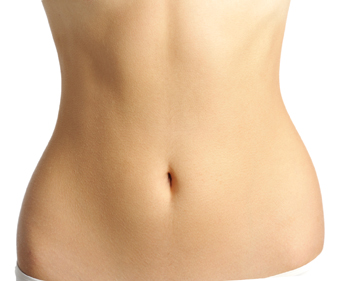Abdominoplasty
Also known as abdominoplasty, a tummy tuck removes excess fat and skin, and in most cases repairs weakened or separated muscles creating an abdominal profile that is smoother and firmer.
Consultation with Dr Philip Fleming is the best way to determine how tummy tuck can help you achieve your personal goals. Dr Fleming is certified by the American Board of Plastic Surgery, Inc and he has more than 25 years of experience in performing tummy tuck. The following is an overview of the tummy tuck procedure.
Procedural Steps
Step 1 – Anesthesia
Tummy tuck is most commonly performed under general anesthesia. You will be asleep and under the care of a board-certified MD anesthesiologist and a board-certified nurse anesthetist (CRNA). These health professionals will monitor you during your procedure, ensuring that you have a safe and pleasant experience.
Step 2 – The Incisions
A full tummy tuck requires a horizontally-oriented incision in the area between the pubic hairline and navel. The shape and length of the incision will be determined by the degree of correction necessary.
Through this incision, weakened abdominal muscles are repaired and sutured and excess fat, tissue and skin is removed.
A second incision around the navel may be necessary to remove excess skin in the upper abdomen.
| Incisions | Incision Closure – Front |

|
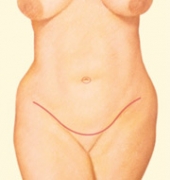
|
| Incisions- Oblique | Incision Closure – Oblique |
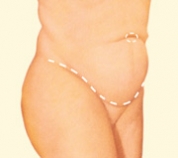
|
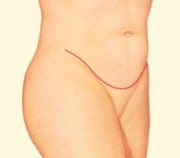
|
| Muscle Separation | Muscle Repair |
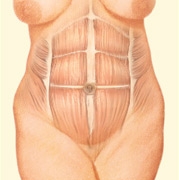
|
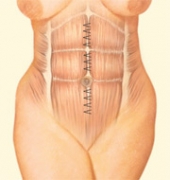
|
Incision lengths and locations vary based your particular anatomy, and patient-surgeon preference.
Step 3 – Closing the Incisions
Incisions are closed with layered sutures in the deep tissue. Sutures beneath the skin and skin adhesive or surgical tape are used to close the skin. Suction drains may be used for 7 to 14 days to reduce swelling and promote faster healing. Over time the incision lines will fade.
Step 4 – The Results
Your tummy tuck will result in a flatter, firmer abdominal contour that is more proportionate with your body type and weight.
The final results may be initially obscured by swelling and your inability to stand fully upright until internal healing is complete. Over time, post-surgical swelling will resolve and incision lines will fade. Satisfaction with your new image should continue to grow as you recover and realize the fulfillment of your goal of an improved abdominal contour.
Within a week or two, you should be standing tall and confident about your new slimmer profile.



